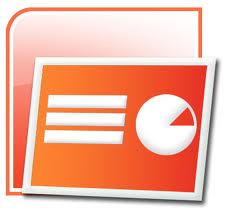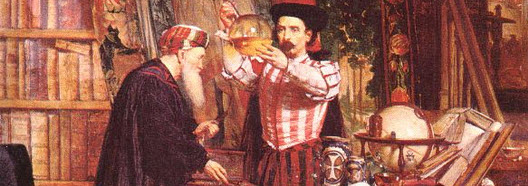Covalent and Ionic Compounds
This is a pretty length chapter that goes into the specifics of how elements bond with each other. Included are aspects of both ionic bonding and covalent bonding. Most of the time is spent on covalent bonding, with more advanced topics such as molecular geometry.
Chemical Bonding Powerpoint Lecture
 |
Purpose: This is a very brief Powerpoint lecture that outlines some of the key differences between metallic bonds and ionic bonds.
Essential Concepts: Metallic bonding, ionic bonding, ionization energy, electronegativity, alloys, crystal lattice, dissociation, solubility.
Chemical Bonding Notes Outline
Purpose: This is a fill-in-the-blank style notes outline for students to complete as you complete the accompanying Powerpoint lecture. Each slide has a set of questions, fill-in-the-blanks, or tables that students fill in based on the information given. This is a good aid for students who struggle with taking notes freehand.
Essential Concepts: Metallic bonding, ionic bonding, ionization energy, electronegativity, alloys, crystal lattice, dissociation, solubility.
Chemthink Modules - Ionic Bonding, Covalent Bonding, and Molecular Geometry
Purpose: All of the modules on Chemthink are well done, but I think this is the chapter where they really are the most useful. There are at least three modules that you can easily incorporate into this unit -- one on ionic bonding, one on covalent bonding, and one on molecular geometry. There are even modules reviewing ionic and covalent nomenclature if the kids need a refresher. I have written a series of worksheets to follow the Chemthink tutorials so that the kids slow down and think through them a little more.
Essential concepts: Ions, ionic bonding, cations, anions, crystal lattice, covalent bonding,electronegativity, molecular geometry.
Mythbusters - Bathtub Electrocution
Purpose: In this episode of the Mythbusters, they test to see whether a person could really electrocute themselves by dropping an appliance (such as a hairdryer) in the bathtub. This is a good segment to show during this unit because you can incorporate concepts from ioinc bonding (e.g. dissociation of ions) to explain why electricity travels through tapwater. They do a few additional tests at the end that show an increase on conductivity when epson salt (magnesium sulfate) is added to the tub, and a decrease in conductivity when bubble bath is added.
Essential concepts: Ions, salts, ionic bonding, electricity, conduction, dissociation.
Mythbusters - Peeing on the Third Rail
Purpose: In this episode of the Mythbusters, they test to see whether a person can electrocute themselves by peeing on an electrified section of train rail. This covers a lot of similar ground to the bathtub electrocution episode, so I often show them back-to-back. In this episode however, the myth is busted. Although urine does transmit electricity, the stream breaks up too much to allow a current to pass through.
Essential concepts:Ions, salts, ionic bonding, electricity, conduction, dissociation.
Electronegativity Difference and Chemical Bonding
Purpose: The type of chemical bond formed between two elements largely depends on their electronegativity difference. If a little or no electronegativity difference is present, the elements will form a nonpolar covalent bond and share electrons. If a larger electronegativity difference is present, the elements will either form a polar covalent bond or ionic bond.
Essential concepts:Electronegativity difference, ionic bond, polar covalent bond, nonpolar covalent bond.
Lewis Dot Structures
Purpose: The ability to draw Lewis Dot structures is an important aspect of learning about covalent bonding and molecular geometry. In this worksheet, students will learn to write Lewis dot structures for individual atoms, simple compounds, polyatomic ions, and resonance structures.
Essential concepts: Covalent bonds, valence electrons, Lewis dot structures, polyatomic ions, resonance structures.
VSEPR Theory with Molecular Model Kits
Purpose: Valence Shell Electron Pair Repulsion, or VSEPR Theory, is a way to determine what geometric shape a covalent compound will make based on the number of bonds and unpaired electrons surrounding the central atom of the compound. This is a chart that I have students fill out as they use a chemistry model kit to build various covalent compounds.
Essential concepts: VSEPR, molecular geometry, linear, trigonal planar, bent, tetrahedral, trigonal pyramidal, Lewis dot structures.
Molecular Geometry
Purpose: This worksheet has students incorporate what they've learned from writing Lewis Dot structures and using the chemistry model kits to begin drawing accurate geometric representations of covalent compounds on their own. They are first given a table of the different geometric shapes and asked to fill in the number of unshared electron pairs and chemical bonds. They then use that information to practice writing geometrically correct structures on their own.
Essential concepts: VSEPR, molecular geometry, linear, trigonal planar, bent, tetrahedral, trigonal pyramidal, Lewis dot structures.
Metallic, Ionic, and Covalent Bonding Study Guide
Purpose: Once the instruction for the unit is completed, students can complete this study guide to aid in their preparation for a written test. The study guide is divided into two sections: vocabulary and short answer questions. The vocabulary words can be found scattered throughout the different instructional worksheets from this unit. The short answer questions are conceptual and meant to see if the students are able to apply what they've learned in the unit.
